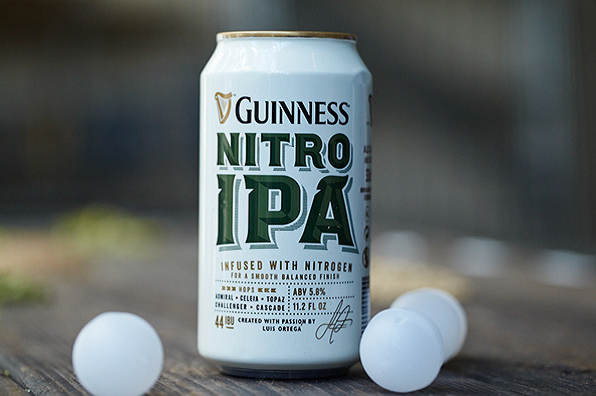Start 14-Day Trial Subscription
*No credit card required

Guinness Debuts Nitro IPA
Leave it to Guinness to come up with a distinctive approach to IPA. Not only does Guinness Nitro IPA have the nitrogenation introduced by the Irish brewer in the late 1950s. It also has some roasted barley to add distinction when it comes to color and taste. And, the company’s widget invention gets involved when it comes to six-packs in cans.
It may be the current fashion for all brewers to have an IPA in their repertoire since the style is driving the American beer market, but give Guinness credit. While large-scale brewers in the U.S. are establishing strategies like buying smaller, independent breweries or making modest steps to create alternate styles under new brand names, Guinness is bringing its name, its longstanding calling card of nitrogenation and new large-scale brewing techniques to create an IPA.
The Nitro IPA came to life at St. James’s Gate in Dublin as a result of The Brewers Project. Launched in September of 2014, The Brewers Project operates a pilot brewery within St. James’s Gate and provides the sort of nimble inventiveness often associated with American craft brewers.

The new cans are beige, with black lettering for the Guinness logo, a signal change for the brand known for its iconic stout.
A tawny gold in the glass due to the use of some roasted malt, Nitro IPA is the second recent release from the Irish brewer to mark a departure in both color and style from black-on-black Guinness Stout with its creamy bishop’s collar or variations such as the carbonated Foreign Extra Stout.
Last year, Guinness introduced its first color makeover with Guinness Blonde American Lager. A recipe created by The Brewers Project, including American brewer Joe Gruss, that beer is brewed in Latrobe, Pennsylvania. The Brewers Project has also launched new beers sold in Europe -- Dublin Porter and West Indies Porter – brewed at St. James’s Gate.
Given the explosion of interest in IPAs in the American market, Nitro IPA is a significant departure for the pilot brewers.
There is no doubting the Guinness character of this IPA. The aromatics from the Topaz, Celeia, Challenger and Cascade hops emerge from the surge and settle of the nitrogenation and announce an India Pale Ale. But it is more restrained than some American hop-forward IPAs and the hop bombs. The roasted barley makes the malt a little less chewy or sweet and the nitrogen helps smooth out the bitter taste starting with the Admiral hops used in the boil. There is enough bitterness to leave a light aftertaste on the tongue, but the IBU rating is a relatively modest 44.



